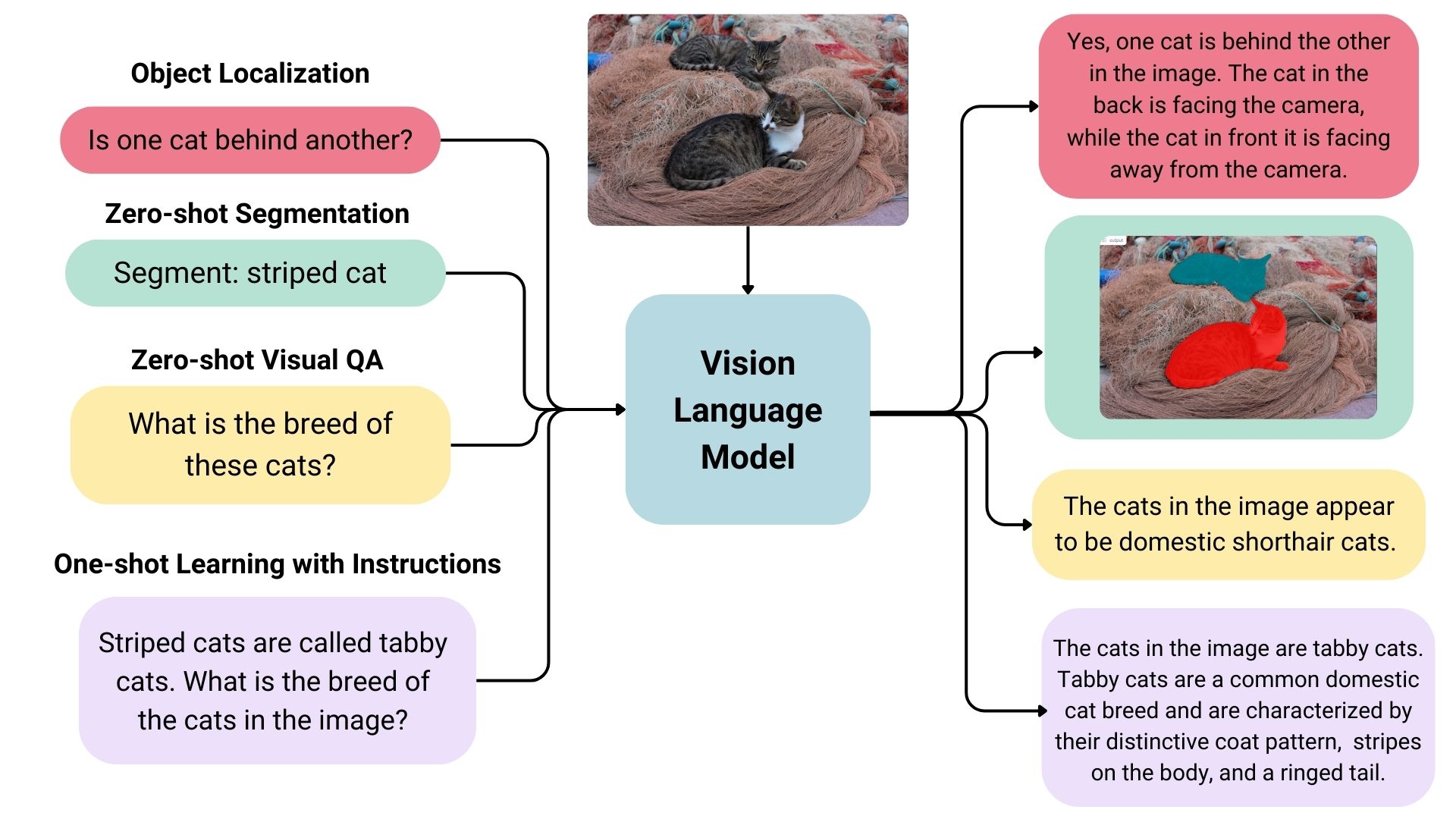Image-Text-to-Text
Image-text-to-text models take in an image and text prompt and output text. These models are also called vision-language models, or VLMs. The difference from image-to-text models is that these models take an additional text input, not restricting the model to certain use cases like image captioning, and may also be trained to accept a conversation as input.

Text Prompt
Describe the position of the bee in detail.
Answer
The bee is sitting on a pink flower, surrounded by other flowers. The bee is positioned in the center of the flower, with its head and front legs sticking out.
About Image-Text-to-Text
Different Types of Vision Language Models
Vision language models come in three types:
- Base: Pre-trained models that can be fine-tuned. A good example of base models is the PaliGemma models family by Google.
- Instruction: Base models fine-tuned on instruction datasets. A good example of instruction fine-tuned models is idefics2-8b.
- Chatty/Conversational: Base models fine-tuned on conversation datasets. A good example of chatty models is deepseek-vl-7b-chat.
Use Cases
Multimodal Dialogue
Vision language models can be used as multimodal assistants, keeping context about the conversation and keeping the image to have multiple-turn dialogues.
Zero-shot Object Detection, Image Segmentation and Localization
Some vision language models can detect or segment a set of objects or describe the positions or relative positions of the objects. For example, one could prompt such a model to ask if one object is behind another. Such a model can also output bounding box coordination or segmentation masks directly in the text output, unlike the traditional models explicitly trained on only object detection or image segmentation.
Visual Question Answering
Vision language models trained on image-text pairs can be used for visual question answering and generating captions for images.
Document Question Answering and Retrieval
Documents often consist of different layouts, charts, tables, images, and more. Vision language models trained on formatted documents can extract information from them. This is an OCR-free approach; the inputs skip OCR, and documents are directly fed to vision language models. To find the relevant documents to be fed, models like ColPali are used. An example workflow can be found here.
Image Recognition with Instructions
Vision language models can recognize images through descriptions. When given detailed descriptions of specific entities, it can classify the entities in an image.
Computer Use
Image-text-to-text models can be used to control computers with agentic workflows. Models like ShowUI and OmniParser are used to parse screenshots to later take actions on the computer autonomously.
Inference
You can use the Transformers library to interact with vision-language models. Specifically, pipeline makes it easy to infer models.
Initialize the pipeline first.
from transformers import pipeline
pipe = pipeline("image-text-to-text", model="llava-hf/llava-interleave-qwen-0.5b-hf")
The model's built-in chat template will be used to format the conversational input. We can pass the image as an URL in the content part of the user message:
messages = [
{
"role": "user",
"content": [
{
"type": "image",
"image": "https://huggingface.co/datasets/huggingface/documentation-images/resolve/main/bee.jpg",
},
{"type": "text", "text": "Describe this image."},
],
}
]
We can now directly pass in the messages to the pipeline to infer. The return_full_text flag is used to return the full prompt in the response, including the user input. Here we pass False to only return the generated text.
outputs = pipe(text=messages, max_new_tokens=60, return_full_text=False)
outputs[0]["generated_text"]
# The image captures a moment of tranquility in nature. At the center of the frame, a pink flower with a yellow center is in full bloom. The flower is surrounded by a cluster of red flowers, their vibrant color contrasting with the pink of the flower. \n\nA black and yellow bee is per
You can also use the Inference API to test image-text-to-text models. You need to use a Hugging Face token for authentication.
curl https://router.huggingface.co/hf-inference/models/meta-llama/Llama-3.2-11B-Vision-Instruct \
-X POST \
-d '{"messages": [{"role": "user","content": [{"type": "image"}, {"type": "text", "text": "Can you describe the image?"}]}]}' \
-H "Content-Type: application/json" \
-H "Authorization: Bearer hf_***"
Useful Resources
- Vision Language Models (Better, Faster, Stronger)
- Vision Language Models Explained
- Welcome PaliGemma 2 – New vision language models by Google
- SmolVLM - small yet mighty Vision Language Model
- Multimodal RAG using ColPali and Qwen2-VL
- Preference Optimization for Vision Language Models with TRL
- Image-text-to-text task guide
Compatible libraries
Note Small and efficient yet powerful vision language model.
Note Cutting-edge reasoning vision language model.
Note Cutting-edge small vision language model to convert documents to text.
Note Small yet powerful model.
Note Image-text-to-text model with agentic capabilities.
Note Instructions composed of image and text.
Note Collection of image-text pairs on scientific topics.
Note A collection of datasets made for model fine-tuning.
Note Screenshots of websites with their HTML/CSS codes.
Note Leaderboard to evaluate vision language models.
Note An application that compares object detection capabilities of different vision language models.
Note An application to compare different OCR models.
No example metric is defined for this task.
Note Contribute by proposing a metric for this task !
